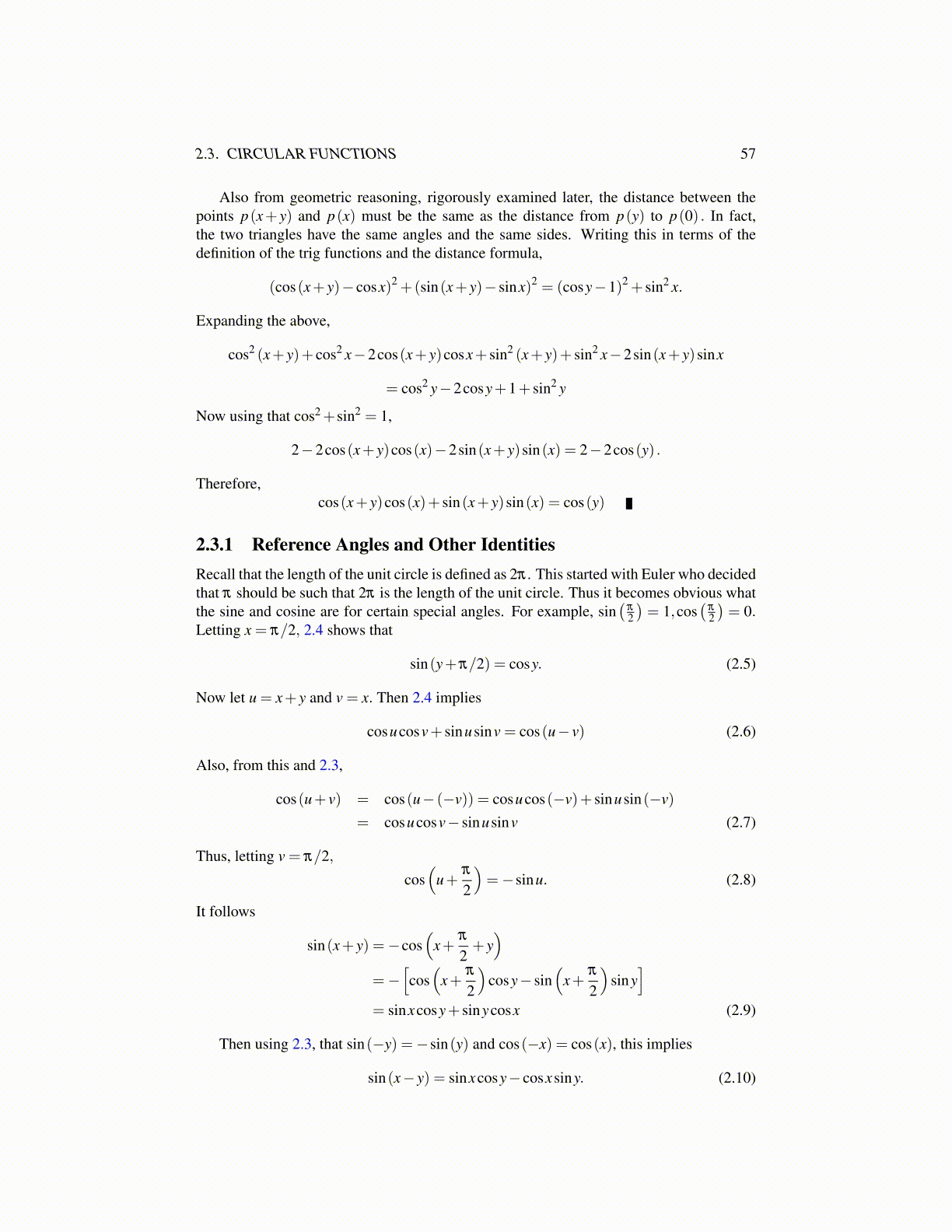
2.3. CIRCULAR FUNCTIONS 57
Also from geometric reasoning, rigorously examined later, the distance between thepoints p(x+ y) and p(x) must be the same as the distance from p(y) to p(0) . In fact,the two triangles have the same angles and the same sides. Writing this in terms of thedefinition of the trig functions and the distance formula,
(cos(x+ y)− cosx)2 +(sin(x+ y)− sinx)2 = (cosy−1)2 + sin2 x.
Expanding the above,
cos2 (x+ y)+ cos2 x−2cos(x+ y)cosx+ sin2 (x+ y)+ sin2 x−2sin(x+ y)sinx
= cos2 y−2cosy+1+ sin2 y
Now using that cos2+sin2 = 1,
2−2cos(x+ y)cos(x)−2sin(x+ y)sin(x) = 2−2cos(y) .
Therefore,cos(x+ y)cos(x)+ sin(x+ y)sin(x) = cos(y)
2.3.1 Reference Angles and Other IdentitiesRecall that the length of the unit circle is defined as 2π . This started with Euler who decidedthat π should be such that 2π is the length of the unit circle. Thus it becomes obvious whatthe sine and cosine are for certain special angles. For example, sin
(π
2
)= 1,cos
(π
2
)= 0.
Letting x = π/2, 2.4 shows that
sin(y+π/2) = cosy. (2.5)
Now let u = x+ y and v = x. Then 2.4 implies
cosucosv+ sinusinv = cos(u− v) (2.6)
Also, from this and 2.3,
cos(u+ v) = cos(u− (−v)) = cosucos(−v)+ sinusin(−v)
= cosucosv− sinusinv (2.7)
Thus, letting v = π/2,
cos(
u+π
2
)=−sinu. (2.8)
It follows
sin(x+ y) =−cos(
x+π
2+ y)
=−[cos(
x+π
2
)cosy− sin
(x+
π
2
)siny
]= sinxcosy+ sinycosx (2.9)
Then using 2.3, that sin(−y) =−sin(y) and cos(−x) = cos(x), this implies
sin(x− y) = sinxcosy− cosxsiny. (2.10)